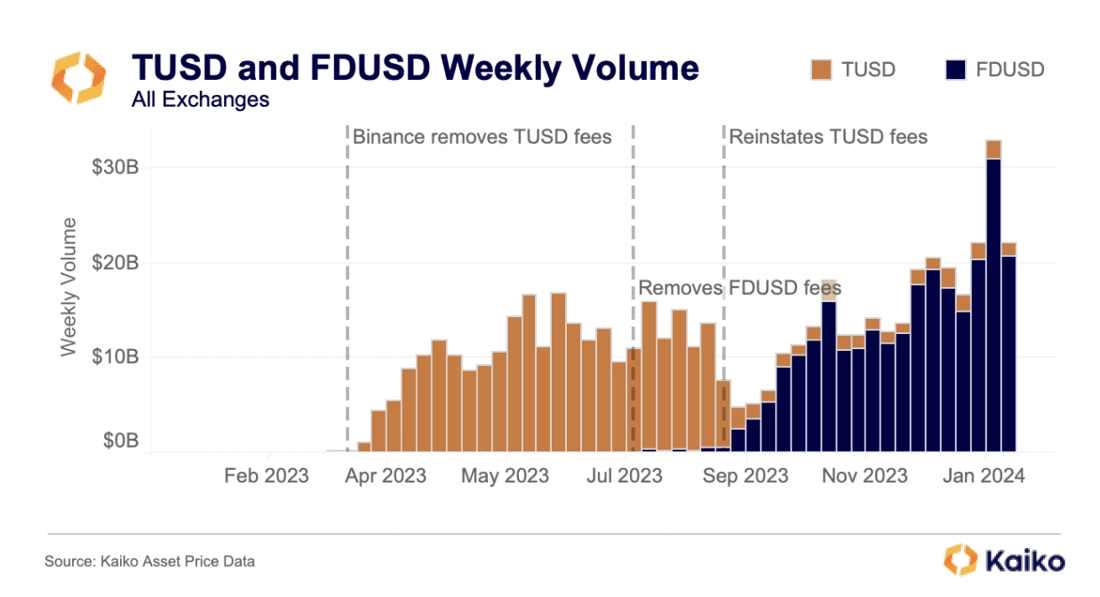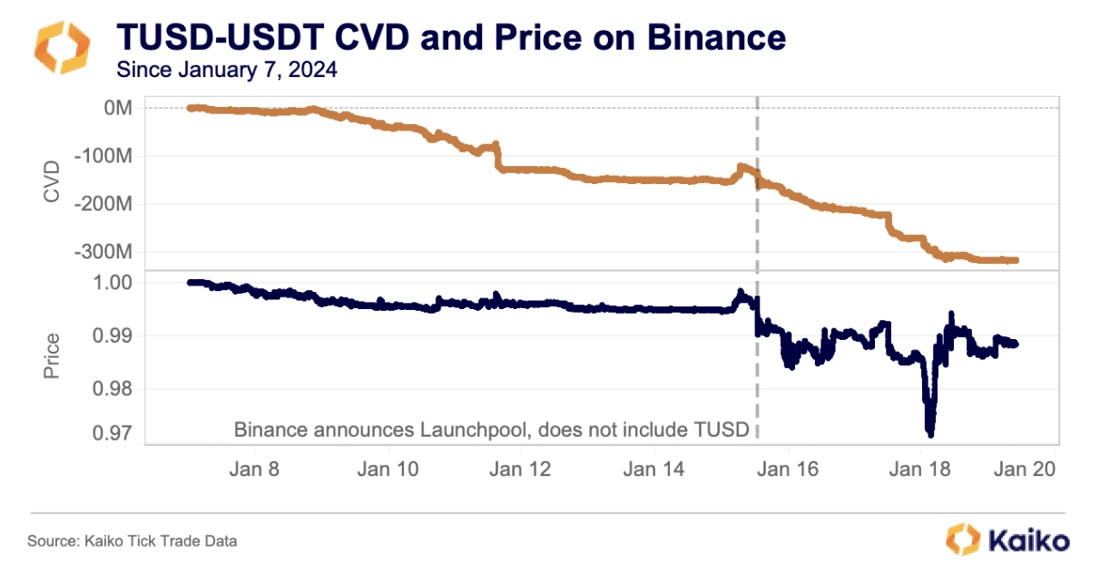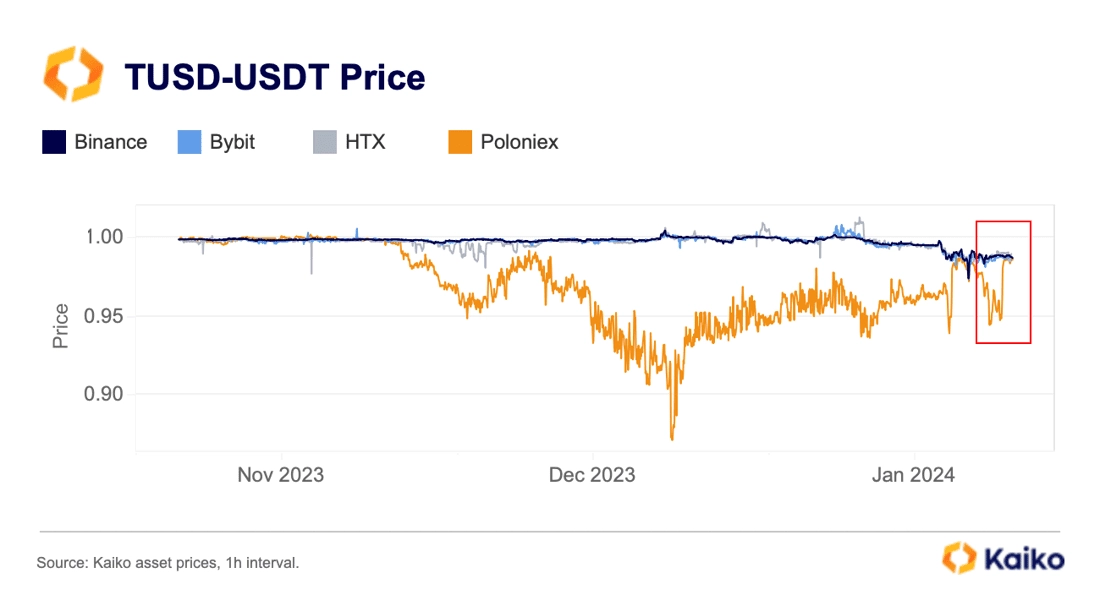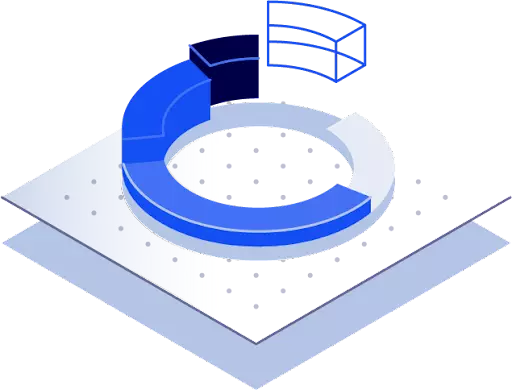Data Points
Will ETF hype fuel ETH’s comeback?

For the first time since 2021, the BTC:ETH correlation dropped below its all time average of 0.71. It is no coincidence that this occurred on the day that the bitcoin spot ETFs started trading. For months, the two crypto assets have been diverging in price activity as BTC benefited from ETF hype and speculation while ETH experienced a relatively sluggish rally. In our latest Deep Dive, we try and understand the impact of a possible ETH spot ETF and if it could lead to a rally ahead of its decision date in May.
Download Report
Weekend trade volume hits all-time low.
Weekend trade volume for fiat currency-quoted bitcoin markets hit an all-time low in 2023. BTC-fiat trade volume includes all markets that incorporate a fiat currency such as the dollar, euro or pound. In contrast, BTC-stablecoin weekend volume has experienced a less extreme drop, and remained close to its 2021 levels.

The trend suggests that crypto markets have become less 24/7 following the collapse of two crypto friendly banks in the U.S. back in March 2023. In addition, fiat on- and off-ramp services have been increasingly disrupted for offshore exchanges such as Binance, which faced issues with several of its banking partners last year.
The launch of 11 spot ETFs could also impact BTC market structure, causing the weekend/weekday gap to widen.
We already observe some changes in BTC trading patterns on U.S.-available platforms in the aftermath of the spot approvals. Hourly BTC-USD trade volume spiked around 8-9PM UTC time, which corresponds to the daily close on U.S. markets (3-4PM EST).
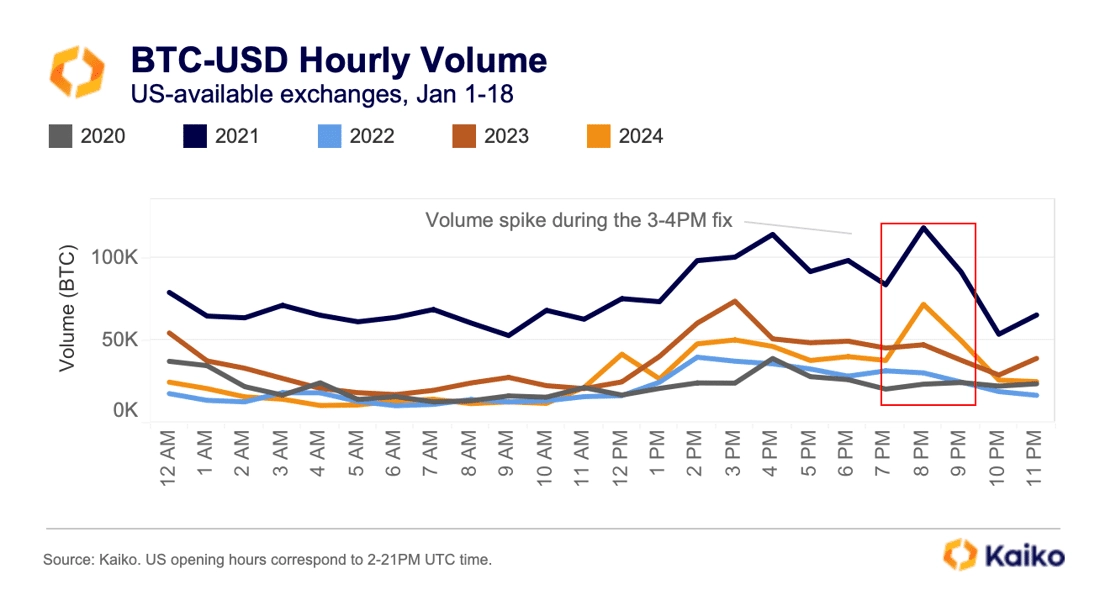
Overall, lower weekend liquidity is likely to exacerbate volatility and keep risk-averse traders and market makers away from the market outside traditional opening hours.
Manta token’s launch on Bithumb marked by volatility.
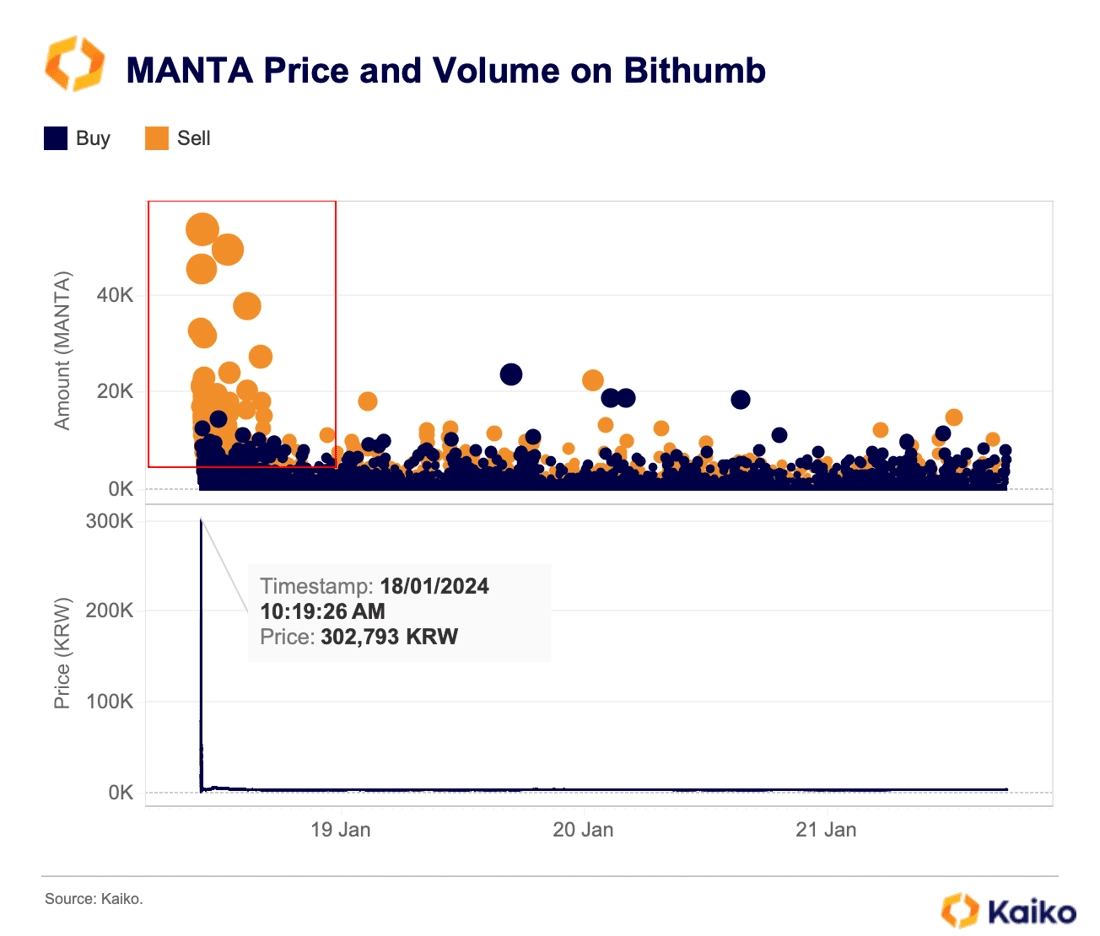
The Manta Network protocol, backed by Binance’s launchpool, faced accusations of money laundering following its listing on the second largest Korean exchange Bithumb. Manta network also experienced a denial-of-service (DDoS) attack on its launch day.
The protocol’s native MANTA token started trading on multiple exchanges on January 18. However, it saw significant volatility on Bithumb just minutes after its launch.
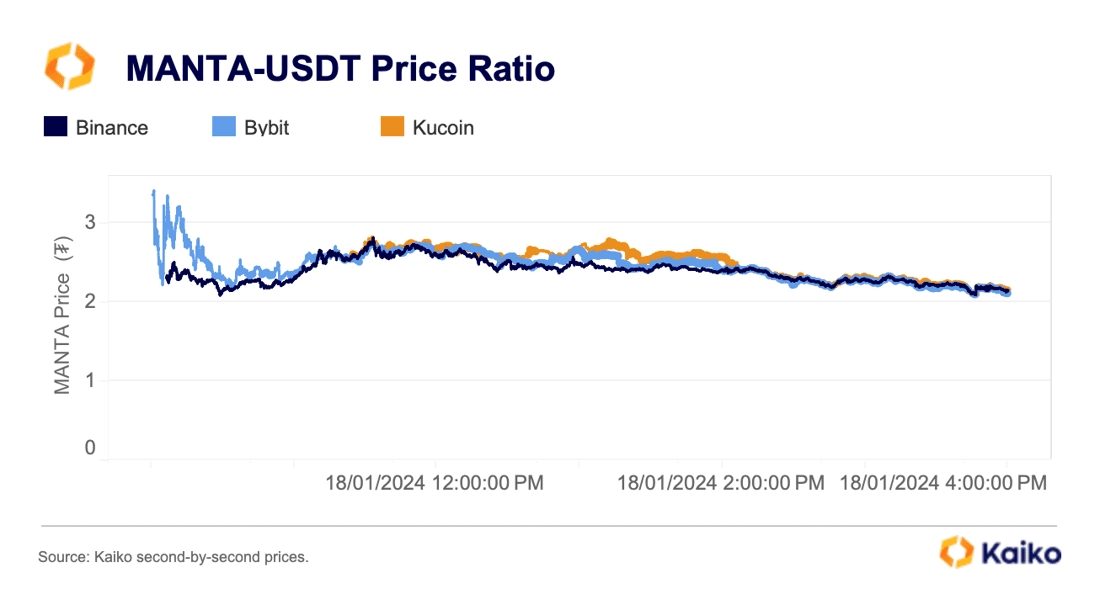
Prices surged from near zero to as high as $220 (330K KRW) before dropping back below $1 after massive selling pressure. This led to speculation of suspicious trading activity involving MANTA insiders. MANTA prices varied significantly less on other exchanges.
Bitcoin outperforms traditional safe havens.
Large institutional players such as BlackRock and ARK have increasingly been praising BTC’s safe-haven characteristics. A safe haven is an asset that is uncorrelated with equities during times of market turmoil.
BTC’s 60-day correlation with the Nasdaq 100 has indeed declined significantly over the past year. It has been close to zero on average since June of 2023 as BTC price movements have been driven by the hype around spot U.S. ETFs. Typically, a correlation between -0.2 and 0.2 is regarded as very weak.
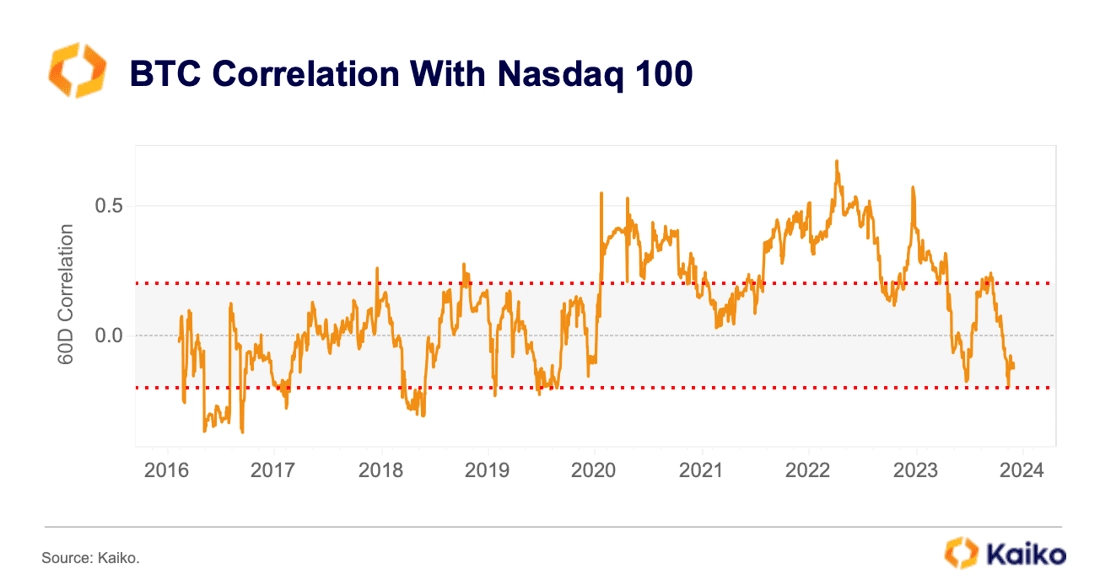
Overall, however, BTC offers significantly higher returns than other traditional safe-havens such as gold, U.S. bonds or the dollar. It has notably outperformed, attracting safe-haven flows during the U.S. banking crisis last year.
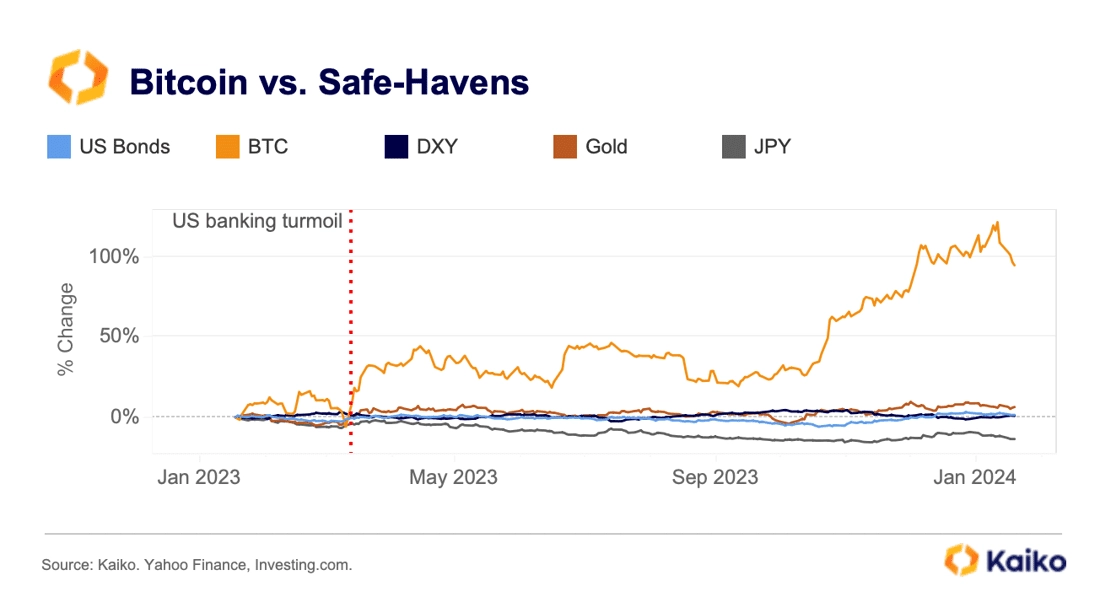
Its asymmetric returns and low correlation could provide solid support for the nine newborn spot ETFs which have already seen strong demand with more than $2bn in net inflow since their launch on Jan 11.
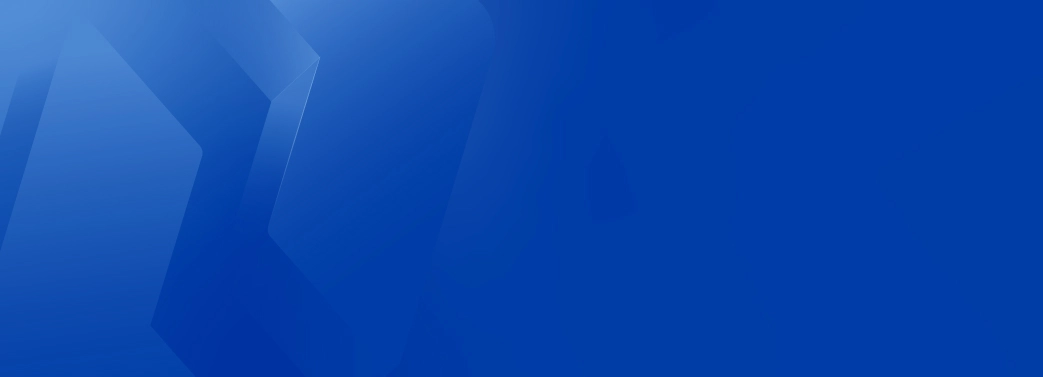

![]()
![]()
![]()
![]()



